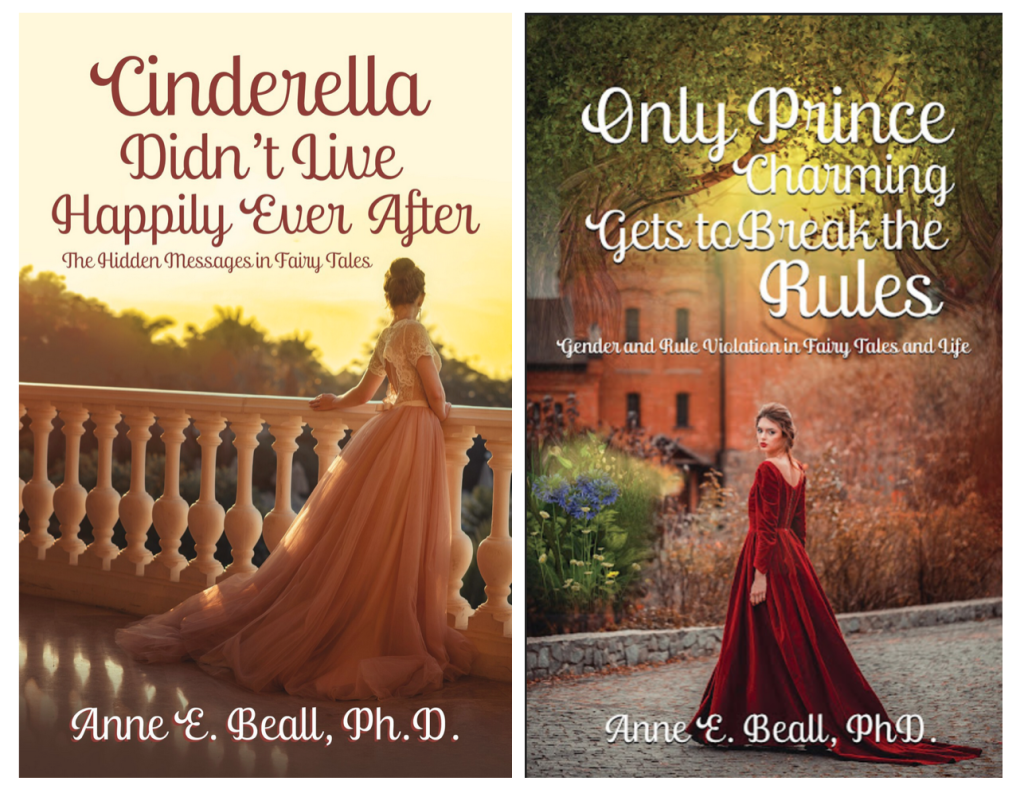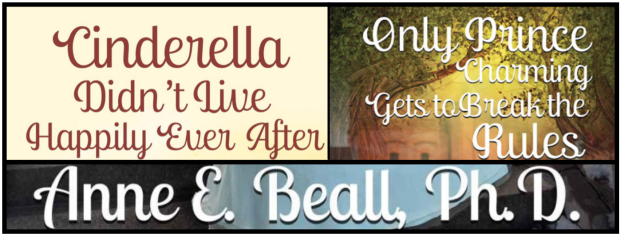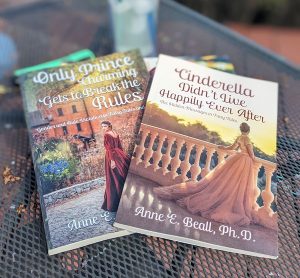I accepted copies of Anne E. Beall’s Cinderella Didn’t Live Happily Ever After and Only Prince Charming Gets to Break the Rules through iRead Book Tours. I don’t always post reviews here on the blog of the non-fiction I read. But since I was sent copies of these books, I am this time. 
About Cinderella Didn’t Live Happily Ever After:
Did Cinderella live happily ever after? One might think so until you look more closely at the hidden messages in beloved fairy tales. In Cinderella Didn’t Live Happily Ever After, fairy tales are analyzed in terms of the underlying messages about marriage, agency, power, suffering, and good versus evil, with a focus on how male and female characters differ in each of these areas. The analysis is a data-driven approach that provides clear evidence for the hidden messages in these beloved tales. The end conclusion is not whether fairy tales are good or bad but rather what messages they deliver about life, even if unintentionally.
My Review:
I think how successful Cinderella Didn’t Live Happily Ever After is depends on the author’s goal and intended audience. To those with any background in gender or literary study, the results of Beall’s content analysis of 200ish Grimm (so mostly German) fairy tales are so to-be-expected that they almost could have gone without saying. (The same is true of the survey conducted.) And the method section and data tables being at the end make them so easy to skip as to defeat their own purpose.
So, for the gender scholar, the book holds little new information. On the other end of the spectrum are those who are not able or willing to believe that the narratives we tell ourselves and raise our children on construct the realities we live. I see a few in the review sections of the book already crying, ‘It’s just a fairy tale; don’t take it so seriously.’ This book, or likely any other, will not convince them to change their minds.
But between the two of them is the student, middle and early secondary especially. Those old enough to read and understand nonfiction but young enough to need to be fed results in the ‘1/3 did this,’ ‘a 1/4 contained that’ format, with very little methodological explanation, depth, or nuance. For this audience, I think Beall’s book is just about perfect. I think it should be in school libraries everywhere. (Unless, of course, the book banners come for it because it highlights the subtle ways the patriarchy passes itself from generation to generation.)
There is a follow-up book, Only Prince Charming Gets to Break the Rules: Gender and Rule Violation in Fairy Tales and Life, which I have not yet read but intend to. Perhaps it builds on this book’s findings or takes the research in a different direction. But my pre-read thought is, why are they two books? This one is barely 70 pages long once you take out all the tables at the end, which I suspect few will continuously flip back and forward to examine. So, it feels like they could be a single work. We’ll see. In the meantime, request one for your school or library; how about?
About Only Prince Charming Gets to Break the Rules:
Explore the fascinating link between gender stereotypes in fairy tales and real-world life with Only Prince Charming Gets to Break the Gender and Rule Violation in Fairy Tales and Life . This thought-provoking book carefully analyzes 200 folktales and fairy tales from around the world, uncovering a universal disparity in how male and female characters are punished for breaking the rules. Through a blend of thorough research and literary investigation, the book sheds light on how these stereotypes affect our families, politics, and education. A powerful feminist critique of social norms, this academic yet accessible exploration shows how our most cherished tales shape our cultures.
Proceeds from this book will be donated to Empowering Girls for Life (EGFL), a nonprofit organization dedicated to creating the female leaders of tomorrow by empowering girls today. EGFL is located in Lombard, IL.
My review:
I thought Only Prince Charming Gets to Break the Rules a better book than Cinderella Didn’t Live Happily Ever After. Both, however, serve a purpose and, I think, contribute to the larger body of research on fairy tales. Ultimately, I think this book shines in many of the same ways and suffers from many of the same faults as the previous one.
Like that previous book, I think this one best suited to young researchers. Beall, for example, takes the time to include a footnote explaining what statistical significance is the first time the term is used. It will be imminently engageable for younger learners and a great entry point to social science. And also similar to the first book, I think the findings are exactly what would be anecdotally expected. That men get away with a lot more than women do, across the board, throughout time and geography, even in our fairy tales, should surprise no one. And like with Beall’s early work, I find that having all the methodology and tables at the back makes them too easy to ignore, leaving the book less than 100 pages (which a younger researcher might very much appreciate, less intimidating).
All in all, however, I really hope this finds its way into school libraries around the country.
Other Reviews:
Amy’s Booksy: Anne E. Beall Reviews

